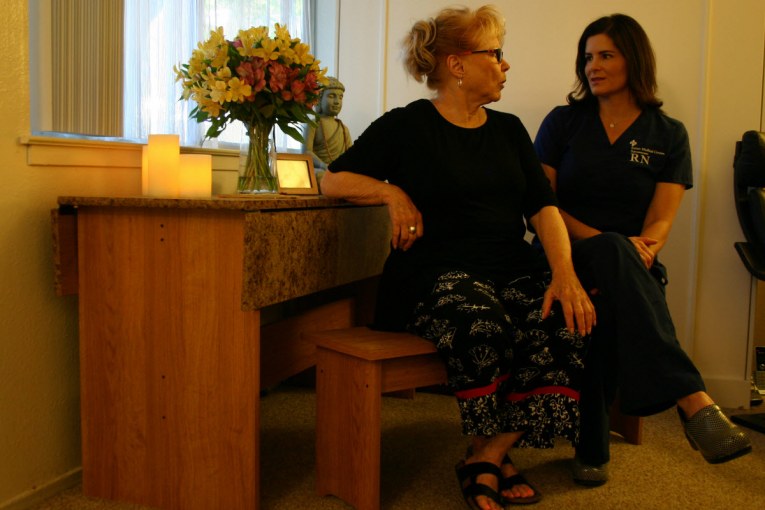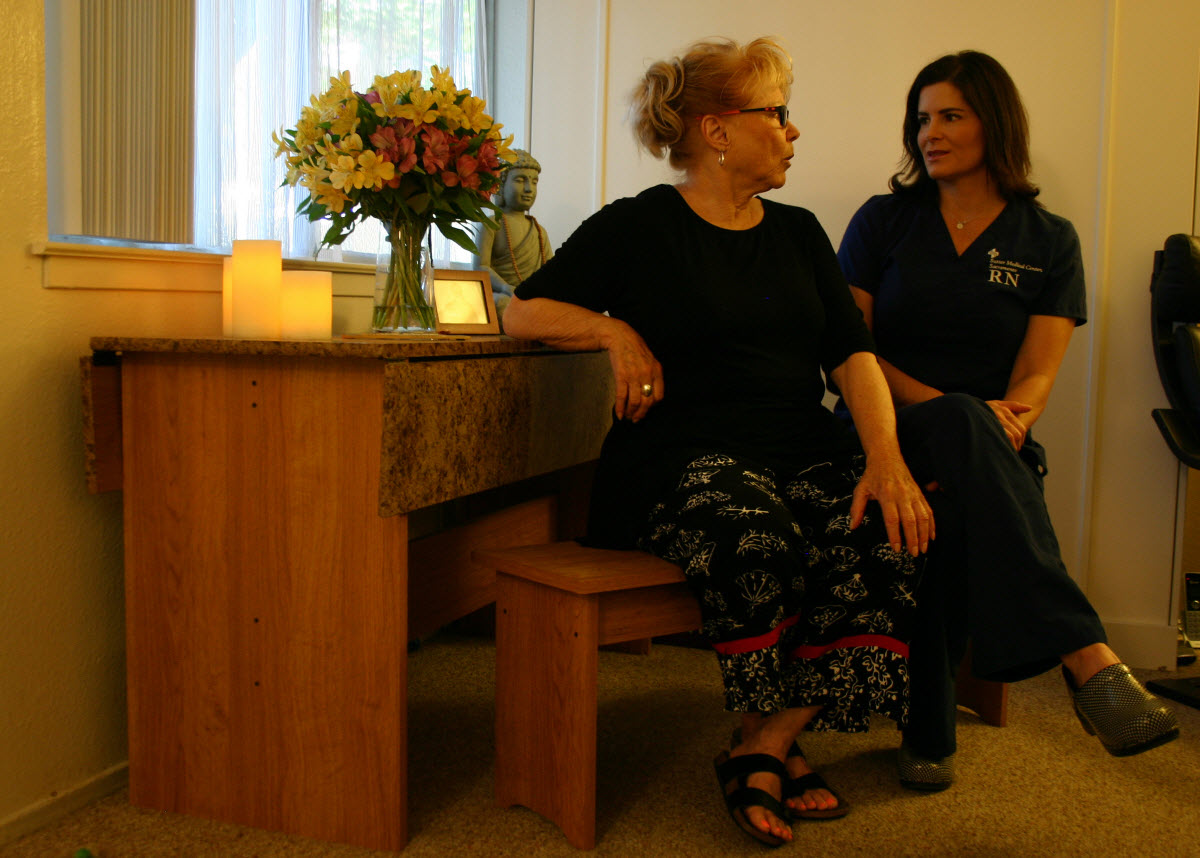

(From Press Release) – June Robinson loves living in Davis, where her daughter and grandchildren live.
What she doesn’t love is paying $1,400 a month for a one-bedroom apartment on Pole Line Road, surrounded by noisy college students. She turns 75 in June, and needs a quiet, ADA-accessible place to live. But in Davis, there are few options for active adults who want to rent or buy a one-story home or apartment.
“It just doesn’t seem like there’s a lot of senior housing,” said Robinson, retired from a career in social services for Marin County. She’s been on a waiting list for affordable housing for more than a year, and deals with blurred vision from macular degeneration.
The average wait for senior housing in Davis is about three years, according to David J. Thompson, a Davis resident who helped craft the city’s affordable housing ordinance. As co-principal of Neighborhood Partners, he helps communities plan nonprofit, cooperative and senior housing, including several in Davis.
Robinson’s daughter, Shannon Painter, loves having her mom in town but is frustrated by the choices. “I think that we have an aging population in Davis. It’s an educated population who are health savvy, and they are going to be living longer. There aren’t very many places where they feel like they belong and have the resources they need.”
That’s why the mom and daughter support the West Davis Active Adult Community. At Shasta Drive and West Covell Boulevard, the proposed housing development is designed to attract current Davis residents and their relatives. It features 325 small to medium single-story homes and 150 affordable senior apartments. About 80 percent of the homes and all the apartments would be restricted to residents 55 and older. Since the project is on the city’s periphery, it would go before Davis voters, likely in spring 2018, if approved by the Davis City Council.
“About 5,300 homes – more than 25 percent of those in Davis – are owned by residents age 50 or older,” project developer and real estate broker David Taormino said. Thompson, planning the project’s affordable senior apartments, says about 20 percent of all rental units in Davis are occupied by non-students, leaving little room for active adults.
Painter, a registered nurse for Sutter in Sacramento, thinks the proposed West Davis Active Adult Community is well-planned. “From my perspective, from having a mom who wants to live in Davis, I just wish we could get her into something that was suitable,” she said. “She’s not ready for Carlton or Atria (which offer assisted living). Something like that project would really give us a sense of security for the future. It’s a good location, right near Sutter Davis Hospital.” Page | 2
Besides the hospital and its emergency room, the West Davis Active Adult Community would be close to Dignity Health and UC Davis medical offices. Organizers also hope to make connections with Kaiser Permanente in South Davis.
The project draws from the latest UC Davis advances in smart technology, sustainable energy and green building practices. One component would be telemedicine, helping older people communicate with their physicians and supporting those in rehab after a hospital stay.
“Telemedicine is the future,” Painter said. “It’s a big savings.”
Other advancements include:
- Sensors to detect falls, either in the carpet, or through wearable devices or other monitors.
- Smart refrigerators that notice if residents haven’t opened it in a while, signaling a nudge to eat.
- Smart devices like Alexa, an intelligent personal assistant that responds to voice commands, and gives residents access to an on-call nurse, anytime.
- Delivery of medications from several nearby medical facilities.
Home plans incorporate wide doorways and showers, and accessibility for wheelchairs and walkers.
The project is across the street from University Retirement Community, and includes plans for an expansion site for URC or a similar medical facility. Other project amenities include a public health and wellness center, pool, 2.6 miles of walking paths, an agricultural buffer, and restaurant with outside seating.
That sounds good to Robinson, who enjoys her daily walks on Davis bike paths but worries about tripping on sidewalk cracks near her apartment.
Painter said the project would be a good neighbor for West Davis residents. “They’re not driving much, so it’s not going to impact traffic. I’m personally tired of Davis citizens voting down these projects that are benefitting seniors. I just think it’s a disservice to the people who have contributed to our city for so many years.”
Plans for the 74-acre site call for 505 housing units. Of those, 284 would be single-family detached homes, 41 would be single-family attached homes, and 150 would be affordable senior apartments. Another 30 are anticipated for University Retirement Community expansion or a similar use. Single-story homes include: 1,400- to 1,800-square-foot houses along the greenway; 1,100- to 1,350-square-foot bungalows; 900- to 1,200-square-foot cottages; plus, small builder lots to accommodate custom or special needs. Estimated sale prices for the pre-planned single-family homes range from the mid-$300,000s to mid-$700,000, and could be available in 2020.
The mission of the West Davis Active Adult Community is “to elevate ‘age in place’ to ‘thrive in place,’ with a thoughtful neighborhood design, blending the inclusiveness of Davis with principles that enhance older adult lifestyle.” Visit its website at http://westdavisactive.com/.

This reads like a sales promotion.
It is a press release.
URC does not pay property tax. Will the residents of this proposed development pay property tax?
That’s a good question.
I found this to be interesting: “What she doesn’t love is paying $1,400 a month for a one-bedroom apartment on Pole Line Road, surrounded by noisy college students.”
You immediately hit on a key problem – affordability and available housing. But it also plays up a conflict with UC Davis students. Yes, that might appeal to the people who would move into this development but it also risks further antagonizing UCD students who might end up being a key swing in a Measure R vote. Risky strategy perhaps or I’m reading too much into it.
Why don’t clear out the space and energy inefficient tin cans on Pole Line and put low rise housing there? I believe the planning number is about 100 units/acre for three story and that includes parking spaces. With 40 acres we could have 4,000 units, or more if we went for lower than usual numbers of parking spaces. That would be enough for both current and anticipated seniors and college students. Several buildings could be age restricted to address the noise issue.
“needs a quiet, ADA-accessible place to live. But in Davis, there are few options for active adults who want to rent or buy a one-story home or apartment.”
That was the first thing we discovered when looking in Davis for a home that my missus could navigate, with other ADA accessible facilities nearby. We were shocked at how poorly the city was adapted for disabled folks.
One of the drawbacks of not growing much in the last two decades is that what we have in the city is not up to current ADA codes.
The Americans with Disabilities Act definitely existed when the D.A.C.H.A. homes were built. What was the excuse back then? Those homes had at least one model with no downstairs bathroom, steps up to the front door, and very difficult access though the side gate to get to the backyard to access through the kitchen.
P.S. $300,000 is not middle class senior citizen affordable.
ADA is not the equivalent what is called universal design. I think it’s only been in the last 8 years or so where most houses build in Davis have adhered to universal design guidelines.
But DACHA was involved w/ City of Davis, so wouldn’t DACHA have to follow any City ada type guidelines?
“I’m personally tired of Davis citizens voting down these projects that are benefitting seniors.”
I personally am tired of those who favor any particular group whether it is seniors, or students, or young graduates, or young families making this one group against others as this statement does. We have a housing shortage in Davis. I believe that we should be addressing that shortage in a holistic fashion, not pitting one group against another. Spoken as a senior.
Especially as older people are doing most of the voting down from what I can see. Spoken as someone Rancho Yolo eligible.
Not all seniors require the amenities this development would offer, yet such seniors would be able to live there. Not all people who need such amenities are seniors, yet such individuals (e.g., people with disabilities) would have limited access. How is that justified? Senior housing is a loophole in fair housing law. It allows discrimination against otherwise protected groups–e.g., families with children–and other “disfavored” groups–e.g., students.
Davis should look at ways to make all new housing more accessible–e.g., by enacting a visitability ordinance. That’s a far better direction than promoting housing that excludes families, students and others based on characteristics such as age.
Painter says she’s tired of citizens who vote no on certain developments. Does she realize many low to middle income Davis citizens are tired, too? Tired of astronomical housing prices. Someone who moves here from Marin might not fully understand that some folks just want rent that is truly affordable. $300,000 is out of reach for many Davis residents.